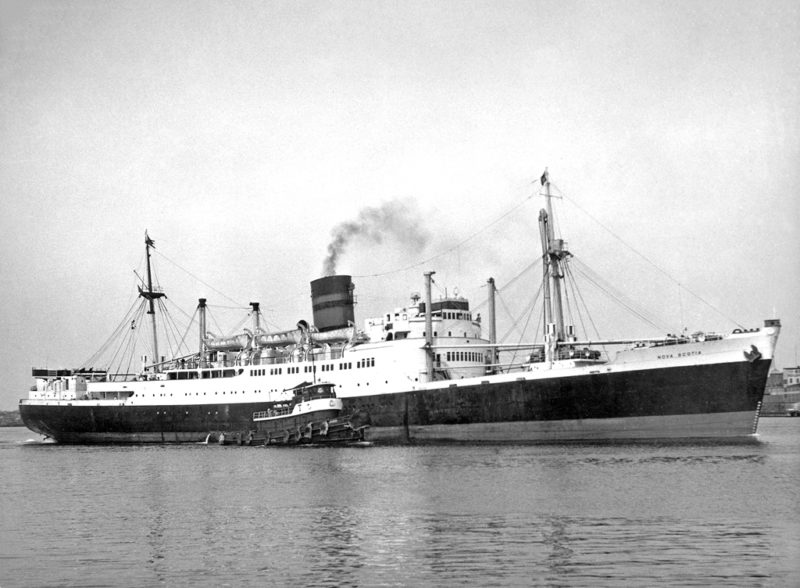
The nine provinces of Canada and two territories were joined in 1949 by a tenth province, that of Newfoundland, which lies to the East of the Gulf of St. Lawrence with the rugged Long Range Mountains forming a backbone to the west coast, and many lakes and indented fjords, and much coniferous forest. The Grand Banks have always supplied plentiful fishing for cod, salmon, halibut and lobster, and there was formerly a big sealing industry. Land based industries include wood pulp, paper making, iron ore and lead, zinc, and copper mining, asbestos manufacture and hydro-electric power. Sea transport to the island, which with Labrador is known as the ‘Golden North’ of Canada, dates back more than a century to the 1820s and 1830s with schooners carrying passengers to the island.
The total population of Newfoundland and Labrador is only half a million souls spread over an enormous area, and they have to endure a severe climate with harsh winter gales and deep snow. Viking settlements have been painstakingly unearthed on both the mainland and Newfoundland shores of Belle Ile Strait, indicating that the Norsemen were the first European settlers to reach the Americas. Separation lanes today exist for shipping to Belle Ile Strait and are routed to the north of Anticosti Island in the Gulf of St. Lawrence, with the main shipping separation lane for St. John’s, capital of Newfoundland, as well as all traffic to Prince Edward Island, Cape Breton, Nova Scotia and deep sea destinations are routed to the Cabot Strait to the south of Anticosti Island. The main passenger shipping companies that served Newfound-land in the past are now given.
RED CROSS LINE
Charles Tricks Bowring and his son Benjamin Bowring set up C.T. Bowring & Company in July 1841 based on the slaughter of seals in Newfoundland. The first steam sealer was purchased in 1865, and a sailing fleet carrying passengers was then operated in the Transatlantic trades. By the time of the death of Charles Tricks Bowring in 1885, a regular passenger service operated from the Tyne to New York, and was being maintained using the first Bowring regular deep sea sister steamers Titania and Juliet of 1,880 grt, with Romeo replacing Titania after her loss in the North Atlantic in January 1882.
The coastal liner service between New York, Halifax (NS) and St. John’s in Newfoundland was begun in 1884 using the Tyne built sisters Miranda and Portia of 1,158 grt with accommodation for sixty First Class passengers, and which became known as the ‘Red Cross Line’ because of the Bowring funnel colours. This service ran until January 1929 when Bowring sold it to the Bermuda & West Indies Steamship Co. Ltd. The steamer Capulet of 1884 continued the Shakespearian theme and was first used in the Transatlantic trade before joining the Red Cross Line with accommodation for sixty passengers. The Red Cross Line was officially the New York, Newfoundland & Halifax Steamship Company, and offered luxury passenger cabins as well as cargo space along the Eastern Seaboard of the U.S.A. and Canada with a one night stay at Halifax (NS). The narrow defile of St. John’s harbour was reached and ships identified themselves by flags or radio, or were identified by spotters and lookouts on the very high Signal Hill shortly before the wharves were reached in the harbour. Flags were raised and cannons fired to warn residents of the imminent arrival of the steamers.
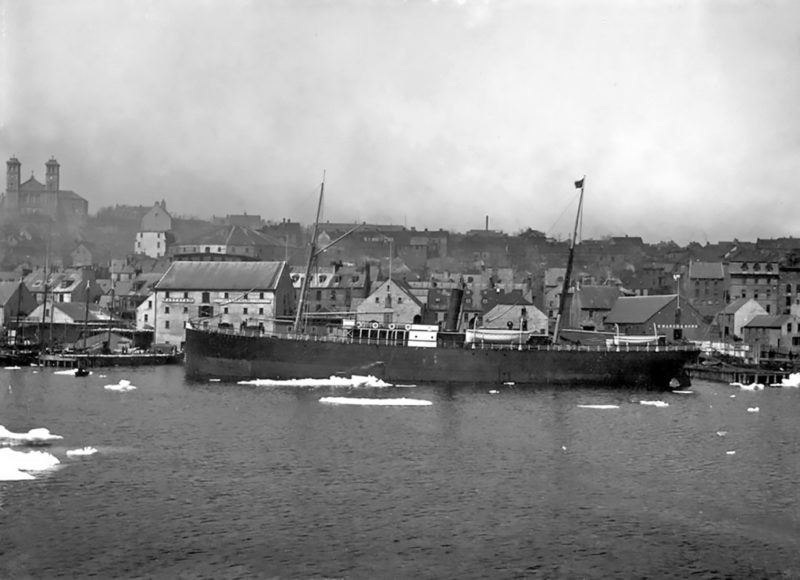
Miranda was lost in 1894 at Sukkertoppen while on a voyage from New York to Greenland, and Portia was lost five years later in July 1899 when wrecked near New York. Portia had carried 23 passengers under Capt. W. J. Farrell and a full crew when she set out from St. John’s for New York on 7th July 1896. Miranda was replaced by the passenger and cargo steamer Silvia, purchased in 1892 by Bowring and used on many services until switched to the Newfoundland route with Harvey & Co. as agents for the Red Cross Line. Return cargoes to New York were iron ore from the mines on Pelley’s Island at Notre Dame Bay in the north of the island and fish of several varieties. Silvia was wrecked in Vineyard Sound near Martha’s Vineyard in Massachusetts in 1908. The German steamer Admiral was sold by the Woermann family of Hamburg to Bowring in 1902 and renamed Rosalind. The average number of passengers per voyage over her ten years of Red Cross Line service before her sale in 1912 to the St. Lawrence Shipping Company of Montréal was 40 passengers, higher in summer and lower in winter.
The passenger and cargo steamer Florizel of 3,081 grt had been built on the Clyde in 1909 by Charles Connell & Company for the Red Cross Line. She was strengthened for navigation in ice, and had the latest radio equipment and submarine signalling apparatus on her bridge. She was also used along with her consorts in early Spring on the annual seal hunt. The average number of her passengers on Red Cross Line service was 30 per voyage, and she was then used as a troop transport during World War I, but was wrecked on Horn Head Point near Cappahayden to the south of St. John’s on 25th February 1918 on Red Cross Line service, her Master having mistaken his position for the turn around Cape Race with the loss of 94 lives out of 78 passengers and 60 crew members after a night and a day waiting for rescue.
The passenger and cargo steamer Stephano of 3,449 grt was built on the Clyde in late 1911 by Charles Connell & Company at Scotstoun for Red Cross Line service, and carried an average of 40 passengers on each of her voyages until she was requisitioned for trooping from Newfoundland to the U.K. in the early part of the war. She sailed from St. John’s for France on 20th March 1915 with 250 troops of ‘D’ Company of the Newfoundland Regiment together with their Commanding Officer and Medical Officer. She was torpedoed and sunk on 8th October 1916 when 2.5 miles ENE of Nantucket Light Vessel while on Red Cross Line service. The crew and passengers were picked up by American destroyers as many of her passengers were American, but they did not interfere or attack the U-boat as America had not joined the war at this point of time.
A twelve day return summer voyage at this time in 1914 was $60 with berth and meals included in a First Class cabin on Red Cross Line service from New York to St. John’s calling at Halifax (NS). This was a luxury service with ships fitted with every possible convenience for the comfort and safety of passengers. The voyage had seven days at sea and two days at St. John’s in Newfoundland and one day at Halifax (NS) to view the beautiful scenery of Nova Scotia and Newfoundland. The steamers sailed from New York at 1100 hours on Saturdays, and passengers could, if they preferred, stay at the comfortable Crosbie Hotel at St. John’s with telephones and hot and cold running water, and great views over ‘The Narrows’.
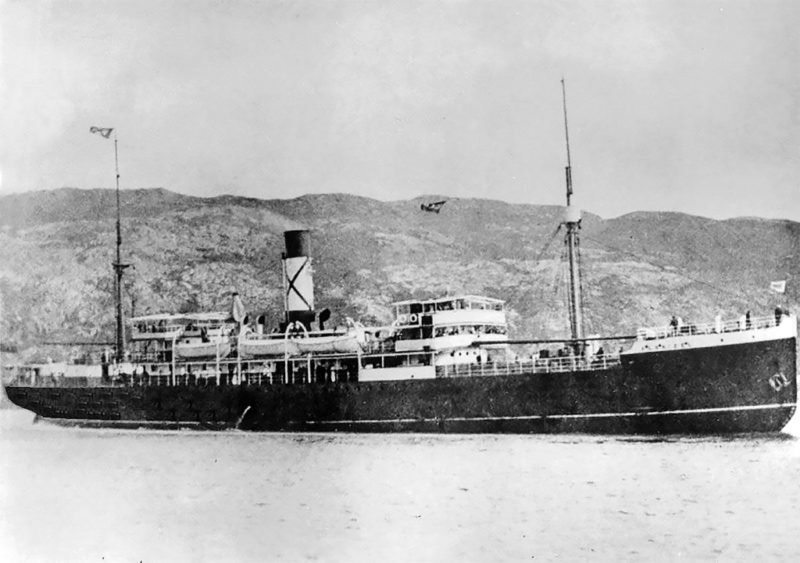
After the loss of Florizel and Stephano, the Red Cross Line service was temporarily carried out by the clipper bowed sisters Prospero and Portia (2) of 978 grt, and built on the Clyde in 1904 by Murdoch & Murray at Port Glasgow, until the arrival of the new larger liner Rosalind of 2,163 grt in 1919. She had been completed in 1911 as Lady Gwendolen for the British + Irish Steam Packet Co. Ltd. for service from Dublin. She often carried more than 100 passengers on her voyages e.g. 109 passengers on 29th June 1922 and 107 passengers on 20th September 1923 from St. John’s to New York. Rosalind was joined by the twin funnelled steamer Silvia (2) of 3,425 grt, which had been built at Danzig in 1909 as Orel for the Russian Volunteer Fleet. She had accommodation for 250 passengers, and on some voyages her passenger complement was full e.g. 215 passengers carried on 6th June 1923 between St. John’s, Halifax (NS) and New York, and at other times she was half full e.g. on 9th November 1922 she carried 128 passengers, and on 24th January 1923 she carried 125 passengers with a crew of twenty eight.
The much larger liner Nerissa of 5,583 grt was completed in 1926 by the Hamilton yard at Port Glasgow for Red Cross Line service, with accommodation for 204 passengers on dimensions of overall length 350.0 feet, moulded beam of 54.3 feet, and moulded depth of 30.4 feet, with a long Bridge Deck of 150.0 feet and a fo’c’stle of length 63.0 feet. She was strengthened for navigation in ice, and had a cruiser stern, two decks with a third deck in the holds, and was powered by a quadruple expansion steam reciprocating engine by D. Rowan & Co. Ltd. of Glasgow. C.T. Bowring had signed the contract with William Hamilton on 3rd November 1925 for her construction within seven months, and she was launched on time on 31st March 1926 and was ready at the end of May to take passengers onboard after very fast work by the yard.
Silvia (2), Rosalind and Nerissa were sold in 1929 by Bowring to Furness, Withy & Co. Ltd. and their Bermuda & West Indies Steamship Company of Hamilton in Bermuda. Nerissa in winter had maintained a New York to Bermuda service, which she continued for Furness, but in summer the three liners ran for the Furness Red Cross Line from Montréal to Charlotteville (Prince Edward Island), St. John’s, Halifax (NS) and New York.
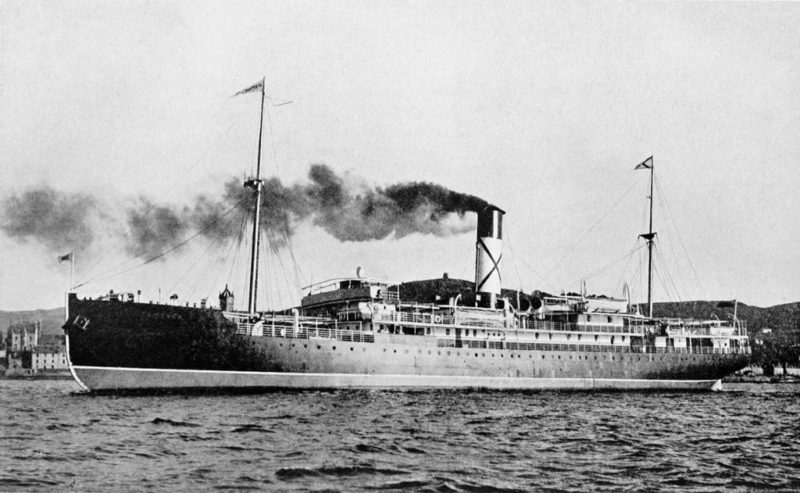
Silvia was sold in 1934 but the other two liners stayed in service for the Furness Red Cross Line until two new replacements were ready in January and April 1936 in Fort Amherst and Fort Townshend from the yard of the Blythswood Shipbuilding Co. Ltd. at Glasgow. The two ‘Fort’s had accommodation for one hundred passengers and were single screw triple expansion steamers with a speed of 13 knots. Nerissa was then used year round on the New York to Bermuda route, but was torpedoed and sunk on 30th April 1941 by U-552 in position 55°57′ North, 10°8′ West while on a voyage from Halifax (NS) and St. John’s to the U.K. with Canadian troops, general cargo, aluminium, shells and trucks. She sank in four minutes after the torpedo struck home with only 84 survivors out of 290 passengers and crew to become the only trooper to be lost with Canadian troops during the war en-route to the U.K.
JOHNSTON-WARREN LINES
Furness, Withy & Co. Ltd. acquired the share capital in 1912 of the White Diamond Steamship Co. Ltd., which was formed in 1898 with a capital of £200,000. A passenger service was operated from Liverpool to Boston managed by George H. Warren. Johnston Line operated a Liverpool to Boston and Eastern Seaboard ports service as well as Mediterranean services, and was acquired by Furness, Withy & Co. Ltd. in 1914. The two lines were later amalgamated together in 1934 as Johnston-Warren Lines. The White Diamond Steamship Line suffered two losses to enemy action during World War I, with Sagamore of 5,197 grt and built in 1892 torpedoed and sunk in the English Channel 150 miles west of the Fastnet by U-49 while on a voyage from Boston to Liverpool with general cargo, 52 lives were lost including her Master. Bay State of 6,583 grt and built in 1915 was torpedoed and sunk 250 miles NW of the Fastnet by U-66 while on a voyage from Boston to Liverpool with general cargo on 10th June 1917.
In 1922, the former White Diamond Steamship Co. Ltd., then operating as Warren Lines (Liverpool) Ltd. began a new passenger line between Liverpool to St. John’s (NFL), Halifax (NS) and Boston with two passenger liners. Sachem of 5,204 grt had accommodation for 60 passengers and had been built back in 1893 by Harland & Wolff Ltd. at Belfast, while Digby of 3,966 grt had been built in 1913 by the Irvine’s Shipbuilding & Dry Dock Co. Ltd. at West Hartlepool with accommodation for 59 First Class passengers and 32 Second Class passengers in the poop. Digby was the last order placed by Sir Christopher Furness before his death on 10th November 1912 at his home of Grantley Hall in North Yorkshire at the age of sixty years. He had been a much loved and respected figure in West Hartlepool society.
Digby carried an average of fifty passengers on the route from St. John’s (NFL) to Boston with a call at Halifax (NS), while Sachem carried 55 passengers on her six day voyage between these three ports on 2nd May 1923, before she was broken up in 1927 after a career of 34 years. The business origins of Warren Line could be traced back to the 1840s in competition with the Transatlantic trade of Samuel Cunard. The name of Warren appeared in the shareholder list for the first time in 1857 when the original owner went bankrupt, and George Warren, the Liverpool office manager, then purchased some of the sailing ships and then entered steam in 1863 to make the company profitable. In 1902, the company came under the sole control of George H. Warren, son of the Liverpool manager. Warren Line ships embarked their passengers at West Alexandra Dock in Liverpool, and at the Hoosal Tunnel Wharves in Boston.
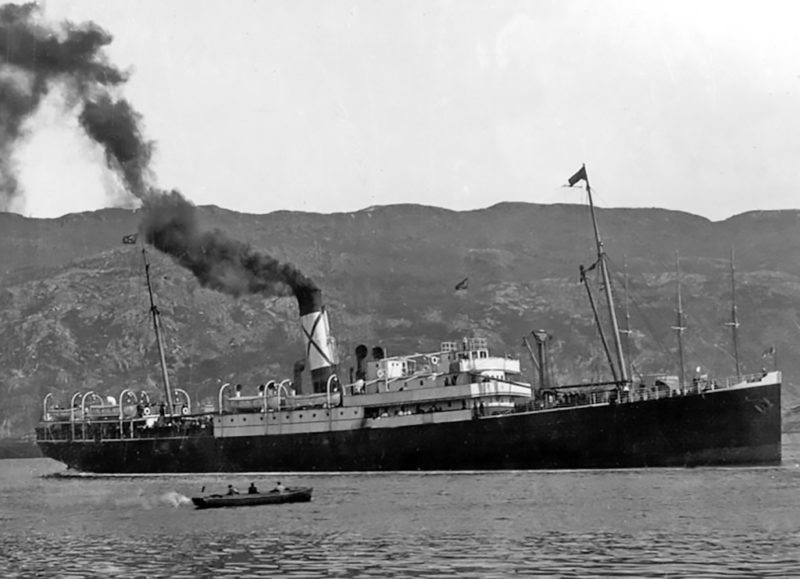
In 1922, Warren Line (Liverpool) Ltd. were running the passenger liners Sachem and Digby as well as the cattle carriers Michigan and Iowa, with the latter having the nickname of ‘Five and Ten’ as she had five masts and ten holds and ten hatches. Sachem had passenger accommodation ‘midships as well as two decks in the holds for carrying cattle, and she had telescopic masts for transits of the Manchester Ship Canal and had been fitted with electricity when new. Sachem and Digby were replaced by two fine new passenger and cargo-liners in Newfoundland of June 1925 and Nova Scotia of May 1926. They were completed by the Vickers yard at Barrow on dimensions of overall length 406.0 feet and moulded beam of 55.0 feet, and were powered by quadruple expansion steam reciprocating engines to give a service speed of 16 knots and carried 1,684 tons of fuel oil for their Transatlantic voyages. The pair had accommodation for one hundred passengers, with Newfoundland carrying 78 passengers between St. John’s (NFL) and Boston on 2nd June 1927, and 70 passengers on 17th September 1931 with also a call at Halifax (NS). She also managed to carry 166 passengers from Liverpool to St. John’s (NFL), Halifax (NS) and Boston, having sailed from Liverpool on 21st August 1936, with some passengers sleeping in dormitories.
Digby did return to Liverpool to St. John’s (NFL) and Halifax (NS) service in 1939 under the United Baltic Corporation (UBC) name of Baltrover, to whom she had been sold in 1926, with Furness, Withy & Co. Ltd. as managers. She had been renamed Dominica in 1925 for the Bermuda & West Indies Steamship Company, and she survived the war before she eventually went on to have a very long career of 52 years when she finally capsized at Djakarta on 26th July 1965 after she had touched the bottom of the harbour at her wharf.
The Johnston-Warren Lines service from Liverpool to St. John’s (NFL), Halifax (NS) and Boston was reinvigorated in 1947/48 by the Tyne built passenger liners Newfound-land (2) and Nova Scotia (2) from the Walker Naval Yard. They carried 158 passengers each, with 62 First Class and 96 in Tourist Class, and had dimensions of overall length 440.0 feet and a moulded beam of 61.0 feet, and were of 7,438 grt with a service speed of 16.0 knots from three steam turbines single reduction geared to a single propeller. They also carried 6,300 tons of cargo, some of it refrigerated, until they were sold en-bloc in 1962 to the Dominion Navigation Co. Ltd. of Australia with H. C. Sleigh as manager and renamed Francis Drake and George Anson respectively. Passenger capacity was cut to 130 one class passengers, but the inevitable voyage to the breakers yard at Kaohsiung took place in 1971 after 24 years of service.
The assets and goodwill of the Quebec Steamship Co. Ltd. had been acquired by Furness, Withy & Co. Ltd. in 1919, together with three liners for their New York to Bermuda and Caribbean services. Bermudian was renamed Fort Hamilton, and Fort St. George and Fort Victoria had been acquired from Australian owners, with Fort St. George also operating to the St. Lawrence and the Saguenay river in each summer from July 1921. She sailed from New York and called at Halifax (NS) before sailing through the Strait of Canso and the Northumberland Straits to the Saguenay river before disembarking some of her passengers at Quebec, the others returning on the same cruise route to New York.
This route was known as the Furness Bermuda Line when sailing from Quebec, and one could cruise the Saguenay and the St. Lawrence and then down to New York with an extension to Bermuda if one wished. Fort Hamilton joined Fort St. George on the same route in July 1922.
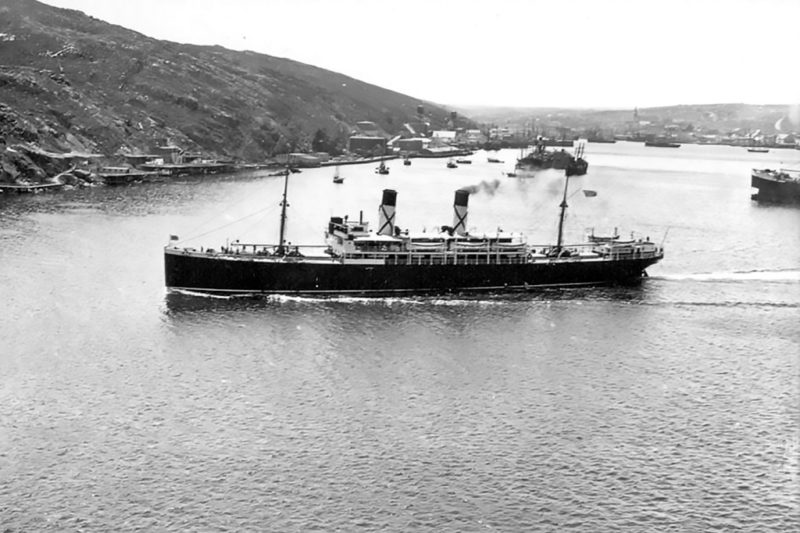
Fort St. George also ran on the Furness Red Cross Line in the 1930s with calls at St. John’s (NFL) until replaced by two smaller new sisters in Fort Amherst and Fort Townshend of 3,489 grt from the Blythswood Shipbuilding Co. Ltd. on the Clyde in 1936 to run between St. John’s (NFL), New York and Bermuda with accommodation for one hundred passengers and a service speed of 13.5 knots with bunker oil fuel capacity of 590 tons. This pair survived the war and were sold off in late 1951 and 1952 and were replaced by Fort Avalon of 3,483 grt in July 1949 from the Scott’s yard at Greenock and Stuart Prince of Prince Line on a seven year charter between 1951 and 1958, both had accommodation for up to a dozen First Class passengers. The long lived service of the Bermuda & West Indies Steamship Company finally ended in 1960.
ALLAN LINE
Hugh Allan was later knighted for his famous passenger service from Glasgow to the St. Lawrence with calls at St. John’s in Newfoundland. He was born in 1810 at Saltcoats in Ayrshire, and was elected President of the Board of Trade in Montréal in 1851 and became pre-eminent in the shipping, shipbuilding and grain and other trades of the St. Lawrence, and lived at his mansion of Ravenscrag for most of his life on the ‘Golden Square Mile’ in Montréal. He rightly earned himself a reputation of a Canadian empire builder, with a Canadian Government subsidised passenger line between Glasgow, Liverpool and Montréal and Portland (Maine). The Allan Royal Mail Line carried the mail and many tens of thousands of passengers across the Atlantic in both directions for over seventy years. Sir Hugh Allan died in Edinburgh in 1882 aged 72 years.
The Montréal Ocean Steamship Company, known as the Allan Line, was formed in 1853 to run passenger steamers between Glasgow, Liverpool and Quebec and Montréal, the winter route being to Portland (Maine), from where rail connections were used to Montréal. A mail contract valued at £25,000 per annum was secured in 1856 for the fortnightly service in summer to the St. Lawrence, and a monthly service in winter to Portland (Maine). In 1861, the Glasgow to Quebec and Montréal service began to call at St. John’s in Newfoundland with calls continuing to the island until 1917. Allan Line was taken over by Canadian Pacific Steamships in September 1915, and a new company was formed as Canadian Pacific Ocean Services Ltd. to take over the passenger and cargo fleets of both companies. The remaining fifteen Allan Line passenger ships were taken over on 16th July 1917.
Allan Line ships had a nomenclature of a country or region ending in ‘ian’, with Austrian of 2,458 grt completed in 1867 by the Barclay, Curle yard on the Clyde, and began her maiden voyage on 18th July 1867 from Liverpool to Quebec and Montréal. The Allan Line fleet at that time comprised thirteen steamers with six sailing from Liverpool and six from Glasgow, together with the standby steamer, usually the North American of 1,715 grt completed by the Denny yard at Dumbarton in 1856. Austrian made calls at St. John’s (NFL) for nearly all of her life e.g. she sailed from that island port on 11th April 1888 for Boston carrying eighteen passengers and her crew and cargo, with most of her passengers and crew living on the island and a few had travelled south from Labrador. Austrian made her last voyage for Allan Line in February 1904.
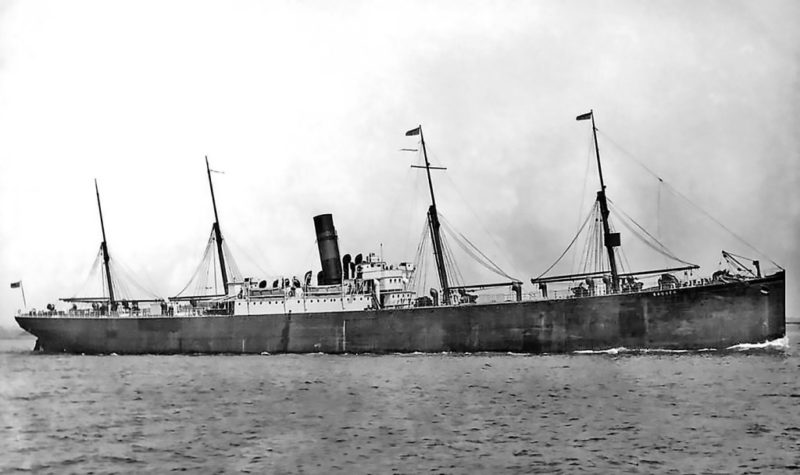
The small wooden hulled coastal steamer Newfoundland of 919 grt was completed in 1872 for the winter service from Halifax (NS) to St. John’s (NFL), when the St. Lawrence was iced up, and the winter service from Halifax (NS) to St. John’s was suspended for larger iron hulled steamers due to the danger of ice when entering the narrow harbour at St. John’s. She had accommodation for one hundred passengers and had been completed by the Baldwin & Company yard in Quebec with her compound two cylinder steam engine built in Newcastle by the Ouseburn Engine Works. She was sold in 1893 to J. A. Farquhar of Windsor (Ontario) for further Canadian service. The Farquhar fleet serving St. John’s (NFL) later had a more famous passenger ship in that fleet in Farnorth of 1,712 grt built in 1908 by Palmers of Jarrow as Richard Welford for the Tyne Tees Steam Shipping Co. Ltd. of Newcastle. Farnorth regularly carried over one hundred passengers from St. John’s to Boston with a call at Halifax (NS) e.g. 106 passengers were carried on 7th September 1926, 105 passengers on 18th September 1926, and 101 passengers were carried on 25th August 1928 from St. John’s (NFL). Allan Line also had other small coastal passenger ships running down the St. Lawrence to St. John’s (NFL) in summer.

Polynesian of 3,983 grt made her maiden voyage from Liverpool to Quebec and Montréal via St. John’s on 3rd October 1872. She sank the Donaldson Line steamer Cynthia of 2,152 grt on 20th May 1889 in the St. Lawrence off Pointe aux Trembles with the loss of eight lives. Sardinian was her sister in 1875 from the same yard of Robert Steele & Son, Greenock, and she carried the vital equipment to set up the wireless station at St. John’s from Liverpool on 26th November 1901 together with Guglielmo Marconi, to begin Transatlantic messages which led to the much better safety at sea and the saving of countless lives.
Sicilian of 6,224 grt was completed by the Workman, Clark yard at Belfast in October 1899 and began her service as a trooper to South Africa during the Boer War. She made her maiden sailing for Allan Line on 28th February 1901 from Liverpool to Portland (Maine). She sailed from Glasgow on Saturday 20th February 1909 and arrived at Halifax (NS) with 44 passengers under Capt. William Wallace, and then sailed for Portland (Maine) with more passengers. She sailed from St. John’s (NFL) on 28th August 1916 for France with 234 troops and seven officers under the command of Capt. George T. Carty with Major L. Paterson as Senior Medical Officer. The troops belonged to the 9th, 10th, 11th and 12th platoons of the Third Battalion of the First Newfoundland Regiment. The men had answered the call to arms, and had enlisted on the island for front line war service, with large numbers of Canadian troops forming a vastly disproportionate percentage of its population to defeat the German Army in Europe. Sicilian was laid up at Falmouth in 1922 and reduced to cargo only status in 1923 for a further six months of service, and was sold for breaking up in Italy on 8th May 1925.
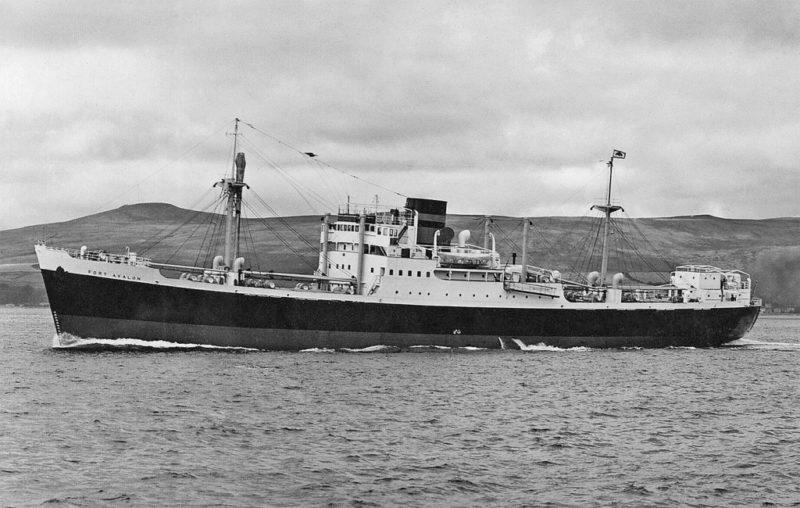
Parisian of 5,395 grt, built in 1881 by the famous yard of Robert Napier & Sons at Glasgow, was the largest steel vessel built to date for Allan Line and the first to have bilge keels. She had four masts and twin funnels and dimensions of length 440.9 feet, moulded beam of 46.2 feet and a moulded depth of 33.2 feet, and carried 150 First Class passengers, 100 in Second Class, and one thousand steerage passengers in the holds. She was rebuilt in 1899 with only one funnel and pole masts without yards, and was fitted with the new and important Marconi wireless telegraphy in 1902. She took part in the rescue of the ill fated Titanic survivors, a maiden voyage that should have been cancelled as her coal bunkers were on fire behind her boilers as she sailed from Southampton and weakened one of her steel bulkheads, causing her to sink earlier than would have been expected before rescue ships could arrive after her collision with an iceberg. Parisian was sold for breaking up in Italy in January 1914 after 33 years of service, more than any other Allan Line ship.
Mongolian of 4,838 grt and built in 1891 by the Henderson yard on the Clyde had been chartered as a troopship during the Boer War. In May 1909, she sailed from Liverpool for St. John’s with 500 passengers and encountered fine weather for six days. However, on 18th May she ran into dense fog and a big icefield with icebergs dotted around the horizon. She was caught three days later immobilised by pack ice three miles outside The Narrows to the harbour. The Red Cross Line steamer Prospero was preparing to sail on her next coastal run, and tried to get as near as possible to Mongolian to take off her passengers and mails. However, the temperature was so low, that many of her passengers were actually able to decamp from Mongolian and walk through The Narrows to the harbour on solid ice. A dory was used by stevedores to help passengers by pulling them across the ice to the harbour until both Mongolian and Prospero were eventually freed from the ice, and Mongolian steamed on to Halifax (NS) with the passengers’ luggage still onboard.
By the end of 1882 when Sir Hugh Allan died aged 72 years on 9th December 1882, the Allan Line fleet was pre-eminent on the North Atlantic, and their 55,000 passengers carried that year was the highest of any British liner company. The fleet consisted of 22 Transatlantic liners and eleven sailing ships, with the mail subsidy for each round voyage making a valuable contribution to revenue. The best remembered Allan Line passenger liners were Victorian and Virginian of 10,757 grt in 1905 as the first turbine propelled steamers on the Atlantic and the first with triple propellers. The pair had accommodation for 632 passengers in three classes and achieved 20 knots on speed trials when new. The last and largest Allan Line passenger ships were Alsatian and Calgarian of 18,485 grt and 17,521 grt respectively from the Beardmore and Fairfield yards on the Clyde. They were the first Transatlantic liners with cruiser sterns and had accommodation for 1,680 passengers in three classes, and were powered by four steam turbines connected to quadruple screws. After takeover by Canadian Pacific Steamships in 1917, only Alsatian survived the war as Calgarian was torpedoed and sunk off Rathlin Island on 1st March 1918 with the loss of 49 lives.
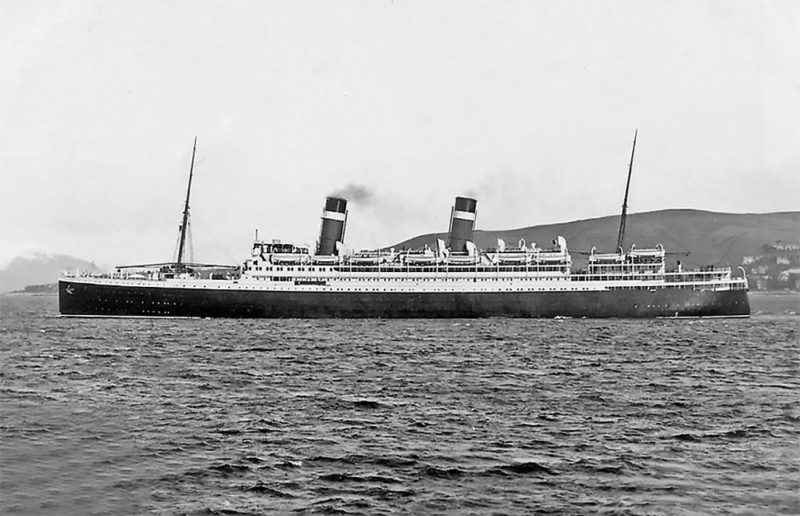
In August 1915, Allan Line abandoned its sailings to St. John’s, Halifax (NS) and Philadelphia in favour of a service to Montréal, with a cargo only service to St. John’s. There were four other Allan Line losses to enemy action during World War I, with Hesperian of 10,920 grt built in 1908 torpedoed and sunk on 4th September 1915 when 85 miles SSW of the Fastnet Rock while on a voyage from Liverpool to Montréal with general cargo, 32 lives lost. Carthaginian of 4,444 grt built in 1894 struck a mine on 14th June 1917 nine miles from Malin Head laid by U-79 while on a voyage from the Clyde to Montréal with general cargo. Ionian of 8,268 grt built in 1901 struck a mine on 20th October 1917 two miles west of St. Govan’s Head laid by UC-51 while on a voyage from Milford Haven to Plymouth in ballast, seven lives lost. Pomeranian, the former Grecian Monarch of 4,241 grt built in 1882, was torpedoed and sunk in the English Channel on 15th April 1918 by UC-77 while on a voyage from London to St. John (NB) with fifty five lives lost including her Master.
As well as calling at St. John’s (NFL) on most voyages, Hanoverian had been lost on the coast of Newfoundland on 2nd September 1885. Tunisian was renamed Marburn in 1922 and continued to call at St. John’s (NFL) until she made her final sailing from Antwerp to St. John’s on 6th April 1928 before returning across the Atlantic for breaking up at Genoa. Corsican was renamed Marvale in 1922 and was wrecked on Freel Rock on Cape Pine twenty miles west of Cape Race (NFL) at the southern tip of the island with all passengers and crew fortunately rescued. Sir Hugh Allan was a long time resident of Montreal and had interests in many St. Lawrence shipping and land based businesses including the coastal trades from Montréal and Quebec to St. John’s on Newfoundland. Allan Line was one of the greatest North Atlantic passenger lines, and Sir Hugh Allan rightly earned his great fame as an empire builder for the Canadian States and Provinces, as well as for the separate Government of Newfoundland.
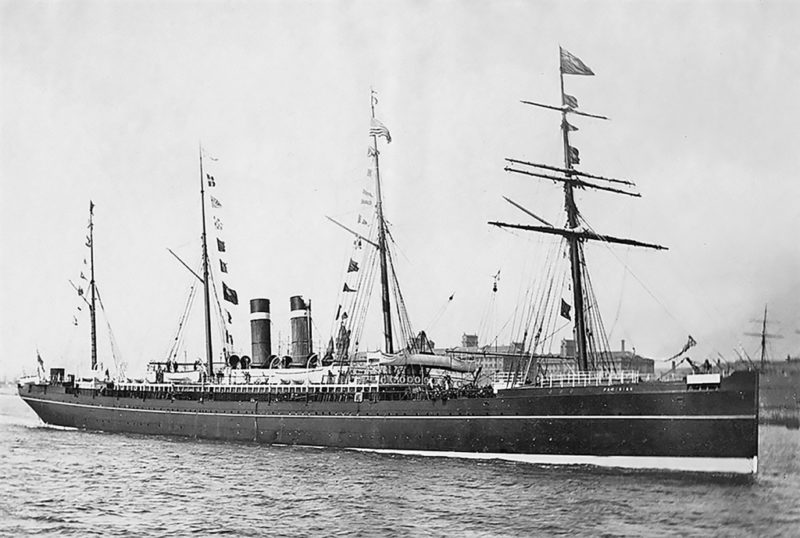
GULF OF ST. LAWRENCE PASSENGER SHIPS
The Canadian Government Merchant Marine (CGMM) had a very big fleet of 63 war built deep sea cargo ships in 1919 of up to 10,500 dwt, and all had ‘Canadian’ prefixes to their names. One smaller ship in this very large fleet was Canadian Sapper of 1,789 grt and she was in service at the end of 1920 and running between Montréal and Corner Brook in 1924, and was then renamed Connector in 1926 for a passenger and cargo feeder service from St. John’s (NFL) to Quebec and Montréal. She had one steel deck and a second steel deck in number one hold, with engines ‘midships and accommodation for passengers on two decks in the superstructure. She was later given a white hull and served in the same capacity as a feeder ship in the Caribbean for Canadian National Steamships (CN), the new name for the CGMM fleet in 1928.
Five beautiful passenger ships of CN of Montréal were known as the ‘Lady Boats’ on a service between Montréal and the St. Lawrence to the Caribbean, and are included here for completeness. The order for five passenger liners of 8,194 grt came about because of a trade agreement in 1923 that called for improved passenger and cargo services between the St. Lawrence and British colonies in the Caribbean. Lady Rodney, Lady Somers, Lady Drake, Lady Hawkins and Lady Nelson were completed during 1928/29 with very attractive accommodation for 107 First Class passengers, later increased to 125 passengers, and a large amount of refrigerated and ventilated space in the holds for one million stems of bananas. They were built and engined by the Birkenhead yard of Cammell, Laird & Co. Ltd. with four steel decks and four holds in their hulls on dimensions of overall length of 438.0 feet, moulded beam of 60.0 feet, and moulded depth to Upper Deck of 32.9 feet and a loaded draft of 23.0 feet. Lady Drake, Lady Hawkins and Lady Nelson differed from the first two units completed in that they also had accommodation for 32 Second Class passengers and 102 in dormitory accommodation.
The quintet used Halifax (NS) and St. John (NB) as their winter start ports to Jamaica, calling at Bermuda and Nassau. Arduous war service as a trooper by Lady Rodney saw her come through the war unscathed, but Lady Drake was sunk off Bermuda on 5th May 1942, Lady Hawkins was sunk off Cape Hatteras on 19th January 1942, and Lady Somers was sunk in service as an Armed Merchant Cruiser (AMC) in the Bay of Biscay in the Spring of 1941. Lady Nelson was sunk at her berth at Castries on St. Lucia in a daring raid into the harbour by U-161, with Umtata of Bullard, King also sunk at her berth, but both were later salvaged and put back into service. Lady Nelson and Lady Rodney in post-war years served the route from the St. Lawrence via Boston to Bermuda, St. Kitts, Antigua, Montserrat, Dominica, St. Lucia, St. Vincent, Barbados, Grenada, Trinidad and Jamaica, with a round voyage taking just over one month. This pair of ‘Lady Boats’ were sold in 1953 to Egyptian owners and ended their careers in 1967/68.
The Black Diamond Steamship Company of Montreal was formed in November 1881 as a collier company carrying coal from the Cape Breton mines of the International Coal Company of Nova Scotia to the wharves of Quebec and Montréal and other ports. Their first passenger carrying collier on the Montréal and Quebec service down the St. Lawrence to Charlottetown (Prince Edward Island), Sydney (CB) and St. John’s (NFL) was Coban of 1,063 grt built in 1881 by Doxford at Sunderland with accommodation for one hundred passengers, followed by the Tyne built near sisters Bonavista of 1,313 grt and Cacouna of 1,451 grt with accommodation for 150 passengers from the Neptune yard of Wigham Richardson & Company in 1884, and Cape Breton of 1,764 grt in 1890. The latter ship was launched at the Osbourne, Graham yard at Sunderland on 14th August 1890, but on her voyage to Newfoundland from the shipyard she ran aground on rocks at Petit Harbour Motion and was held fast. Coban came round from St. John’s and tried to tow her off but to no avail, and the greater power of H.M.S. Pelican succeeded and towed her to a dry dock at St. John’s for repairs. All Black Diamond Steamship Line ships were named after towns and villages around the St. Lawrence, Newfoundland or Cape Breton areas.
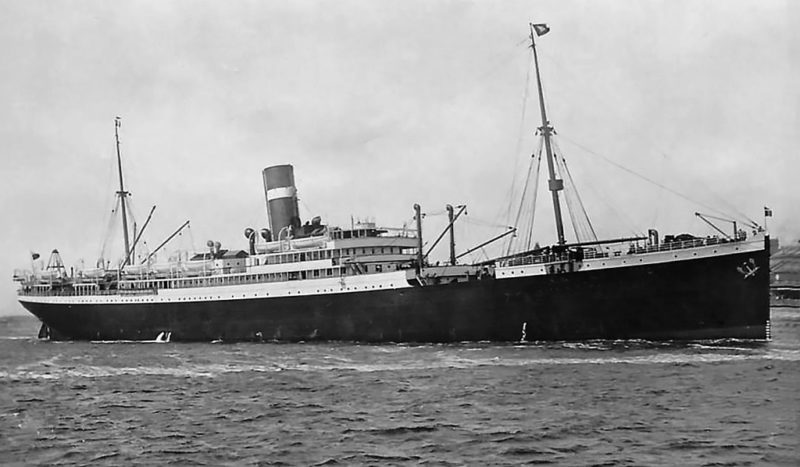
The Dominion Coal Company was formed in 1893 with the Black Diamond Steamship Company as its subsidiary. Rosalind was chartered in 1911 from the Red Cross Line to run alongside Bonavista to St. John’s (NFL), and she was purchased in April 1912 and renamed City of Sydney after the Cape Breton township. Bowring & Archibald were the New York agents for the Red Cross Line, and operated the Black Diamond Line at this time in conjunction with the Red Cross Line and issued tickets for both lines. Morwenna of 1,414 grt was acquired from Yeoward Line of Liverpool to replace Bonavista, lost in the Bay of Fundy on 15th March 1912. Morwenna was carrying only 15 passengers or fewer from St. John’s (NFL) to New York per voyage in April 1914, not enough to cover costs and make a decent profit. All Black Diamond Line passenger services thus ceased at the end of the 1914 summer season, those down the St. Lawrence to St. John’s (NFL) had been offered at $65 for the round voyage that season by Bowring & Archibald. Coban continued with coal cargoes but ran aground at Placentia Bay and was refloated and towed into St. John’s on 2nd January 1916.
The Dominion Coal Company colliers began to carry much larger cargoes of coal after 1916 of up to 11,300 dwt, with second hand purchases including Daghild of 7,978 grt, joining from a Scandinavian company after being built by Doxford at Pallion in Sunderland in 1916, the four masted Lord Strathcona of 7,300 grt completed in 1915, and Rose Castle of 7,500 grt built in 1915 for the Lancashire Shipping Co. Ltd. with James Chambers & Company as managers and joined Dominion in 1920. The smaller Lingan of 4,677 grt and built in 1911, and Watuna of 1,800 grt completed in 1918 were also part of the fleet, with the Dominion coal and steel businesses taken over by Donaldson Brothers in 1934, including the large Dominion Steel and Coal Corporation.
The Clarke Steamship Co. is covered in the ‘Forgotten Fleets’ article this month.
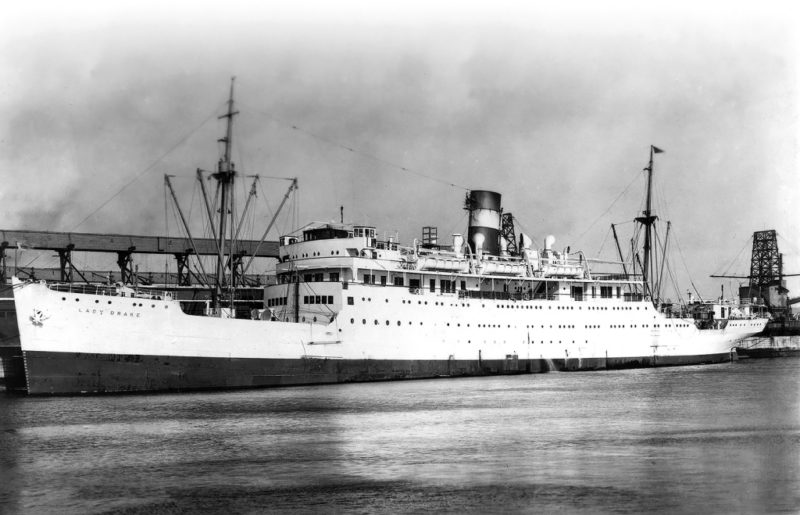
NEWFOUNDLAND COASTAL FERRIES
The Newfoundland Government decided in 1860 to subsidise a regular scheduled steamer service, with the first vessel chartered two years later, and several other steamers up to 1877. After 1877, the two steamer service with Plover and Curlew of Bowring Brothers operated two services, one north and south from St. John’s and the other in Conception Bay. Harvey & Company took over the service in 1888, and by the completion of the railway line in 1898 there was an attempt to consolidate and expand coastal steamer services in Newfoundland and Labrador. Bowring Brothers signed a new service contract in February 1904 for their new steamers Portia and Prospero for the Coastal Mail Service, each with accommodation for 60 cabin and 90 steerage passengers. The Northern service was from St. John’s to Griquet with 31 intermediate ports of call, while the Southern service to Bonne Bay had 27 intermediate ports.
Robert G. Reid of the Reid Newfoundland Company also ran a mail and passenger service to outposts around Newfoundland with a fleet of ships of 300 grt to 900 grt known as the ‘Alphabet Fleet’ because of their names of Argyle, Bruce, Clyde, Dundee, Ethie, Fife, Glencoe, Home, Invermore, Kyle, Lintrose and Meigel. However, in response to complaints from passengers about the Reid service in 1904, the Newfoundland Government subsidised the use of two of the Reid vessels, and eight years later subsidised another two Reid vessels. In 1923, under the Railway Settlement Act, the Newfoundland Government took over the island railway, and the ‘Alphabet Fleet’ of Reid’s was purchased outright. The larger steam ferry Caribou of 2,222 grt and overall length of 266.0 feet and moulded beam of 41.3 feet was brought into service in 1925 on completion at Schiedam by the New Waterway Shipbuilding Company, with two steel decks and a third deck in the holds and strengthened for navigation in ice and a service speed of 14.5 knots. Two hundred passengers had steam heated cabins in winter with brilliant electric lights on her voyages from Port aux Basques (Newfoundland) to North Sydney. She was sunk by U69 on 14th October 1942 while traversing the Cabot Strait on her three times weekly lawful voyages in convoy, with a big total of 137 lives lost including women and children out of 191 passengers and 46 crew onboard.
The Newfoundland Government ferry fleet in 1932 was one of fourteen ferries named Argyle, Caribou, Clyde, Daisy, Glencoe, Home, Kyle, Malakoff, Meigle, Portia, Priestman, Prospero, Sagona and Susu. The Confederation of Canada gained Newfoundland as a province in 1949, and the Newfoundland Railway and its ferry service became part of the Canadian National Railway. The new ferry Abegweit joined Canadian National (CN) in 1947 from the Marine Industries yard at Sorel on the St. Lawrence with a maiden sailing to Newfoun-dland on 28th June 1947. She was of overall length 372.0 feet with a loaded draft of 19.0 feet and carried 400 passengers, 125 cars or one complete train of sixteen railway cars via a stern ramp. She had ice breaking capability for the severe winter climate, and her Sulzer diesel engines of 12,000 bhp were connected to electric motors and her single propeller to give a service speed of 16.5 knots.
The passenger, vehicle and rail ferry John Hamilton Gray joined CN in 1968 from the same Sorel yard, and was of 11,260 grt with a loaded draft of 20.4 feet with bow, stern and side loading doors. She could carry 530 passengers with 20 of these berthed in cabins, 18 trailers or one complete train of sixteen railcars. The year before, the ferry Ambrose Shea of 9,465 grt entered service to Newfoundland from the same Sorel yard then owned by Vickers Ltd. She had accommodation for 570 passengers of which 260 were berthed in cabins, 100 cars, and 14 trucks loaded via stern and side doors. She had a service speed of 17.25 knots from diesel engines of 13,000 bhp, and was very similar in appearance to John Hamilton Gray.
In 1977, the Canadian National Newfoundland ferry operations passed to CN Marine in Atlantic Canada, and then were rebranded as Marine Atlantic in 1986 with a Head Office at Moncton (NB). Twin funnelled ferries were then built, including Sir Robert Bond of 11,197 grt with bigger stern ramps, and the sisters Caribou (2) of 27,213 grt in 1984 and Joseph and Clara Smallwood of 27,615 grt in 1989 for the North Sydney to Port aux Basques service for most of the year, changing to the Newfoundland port of Argentia on Placentia Bay in summer for quicker access of 90 minutes to St. John’s. Caribou (2) stopped on 12th May 1986 on her maiden voyage at the exact location where her predecessor had been sunk by U69 and laid a wreath on the water, and had thirteen survivors of this terrible wartime sinking onboard. Abegweit (2) was completed in 1982 as a rail, vehicle and passenger ferry to Newfoundland, her name is the Native American name for Prince Edward Island. She was of overall length 401.0 feet and able to carry 974 passengers, 250 cars, 40 trailers or a complete train of sixteen railcars.
The former yellow hulled passenger ferry Princess of Tasmania of 3,964 grt and built in 1959 was withdrawn from her Devonport (Tasmania) to Melbourne service in 1975 and sold and renamed Marine Cruiser by CN and served Newfoundland well until 1984. Marine Evangeline of 2,793 grt was the former Harwich ferry Duke of Yorkshire, Marine Nautica of 12,035 grt was the former Stena Nautica, Marine Atlantica of 12,107 grt was the former Stena Atlantica and later became Sardinia Vera in the Mediterranean for Corsica Ferries/Sardinia Ferries. The Hyundai built ro-ro Stena Grecia became Atlantic Freighter for Marine Atlantic between 1987 and 2010.
The present Marine Atlantic ferries to Newfoundland include Blue Puttees of 28,460 grt and completed in 2006, her exact sister Highlanders completed a year later, Leif Ericson of 18,523 grt and completed in 1991 as Stena Challenger carrying 500 passengers with 1,550 lane metres of space for cars and trucks, and Superfast IX chartered as Atlantic Vision in November 2008 and carrying 962 passengers and 531 cars or 2,425 lane metres of cars, trucks and trailers at a fast service speed of 27 knots. Blue Puttees is the former Stena Trader of 28,460 grt and carries one thousand passengers and 2,840 lane metres of cars, trucks and trailers. She is of overall length 199.5 metres and is proudly named after the Blue Puttees detachment of troops of the Royal Newfoundland Regiment that took part in the tragic advance at Beaumont-Hamel on 1st July 1916 and suffered huge casualties.
The service between North Sydney and Port aux Basques on Newfoundland is twice daily with a morning and an evening sailing, and takes around seven hours depending on weather conditions. There is also a frequent ferry service between the island from St. Barbe in Newfoundland on Belle Ile Strait to Blanc Sablon on the mainland. This service is all year round, and takes in summer around one hour and 40 minutes, and there is also a seasonal ferry service from Blanc Sablon to Corner Brook. There are small ferry sailings also between St. John’s and St. Anthony, Goose Bay to Lewisporte, and St. Anthony to Nain, all in Newfoundland.

POSTSCRIPT
Gander Airport near Bonavista Bay in Newfoundland had taken over the coastal passenger trade to and from the island by the mid 1960s, and today continues to grow its passenger traffic by 6% each year, in addition to a large refuelling trade as a stop for Transatlantic long haul airliners.
The Narrows in the harbour entrance to the capital of St. John’s are only 61 metres wide at the narrowest point, making a tight squeeze for the big freight ro-ros of the Oceanex freight service from Montréal and Quebec of Oceanex Sanderling, Oceanex Avalon and Oceanex Connaigra. A very skilled pilot is needed to get these freight ro-ros through to their berths in the wide harbour, with the wharves also acting as bases for oil rig supply vessels, trawlers, small vessels under repair and other craft. The St. John’s pilots describe getting these freight ro-ros into and out of port as akin to ‘threading the eye of a needle’.
Fort Amherst was built in 1763 on the opposite south bank to Signal Hill in The Narrows, and Fort Amherst Lighthouse, now a heritage site, was erected at South Head to guide approaching ships into the harbour. The Furness, Withy coastal passenger ship Fort Amherst was named after this fort.
I wish to express my sincere thanks to the Newfoundland Grand Banks website at www.ngb.chebucto.org for the details of passenger sailings to and from St. John’s in Newfoundland.





Comments
Sorry, comments are closed for this item